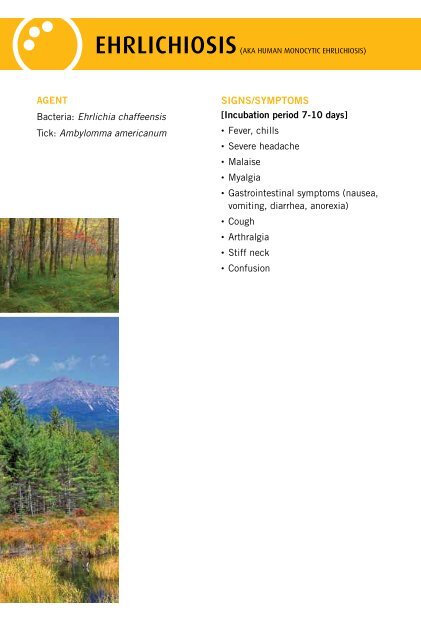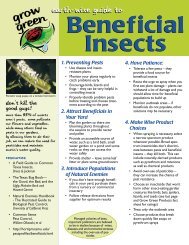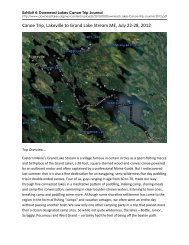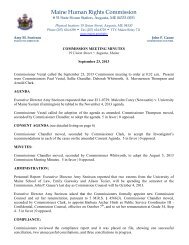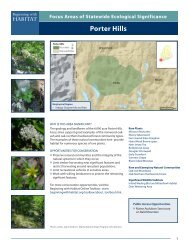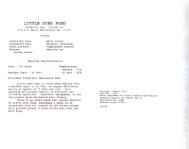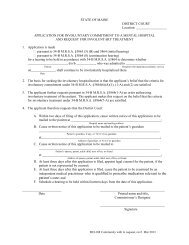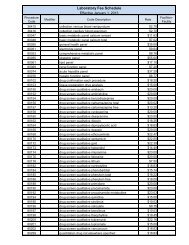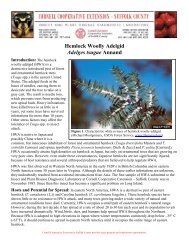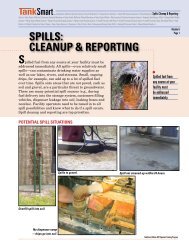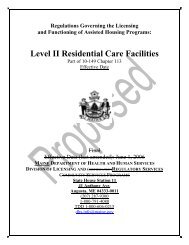TICK-BORNE DISEASES IN MAINE - Maine.gov
TICK-BORNE DISEASES IN MAINE - Maine.gov
TICK-BORNE DISEASES IN MAINE - Maine.gov
Create successful ePaper yourself
Turn your PDF publications into a flip-book with our unique Google optimized e-Paper software.
EHRLICHIOSIS (AKA HUMAN MONOCYTIC EHRLICHIOSIS)<br />
AGENT<br />
Signs/Symptoms<br />
Labs<br />
Bacteria: Ehrlichia chaffeensis<br />
Tick: Ambylomma americanum<br />
[Incubation period 7-10 days]<br />
• Fever, chills<br />
• Severe headache<br />
• Malaise<br />
• Myalgia<br />
• Gastrointestinal symptoms (nausea,<br />
vomiting, diarrhea, anorexia)<br />
• Cough<br />
• Arthralgia<br />
• Stiff neck<br />
• Confusion<br />
Common Findings on Routine<br />
Laboratory Tests<br />
Generally observed during the first<br />
week of clinical disease<br />
• Thrombocytopenia<br />
• Mild to moderate leukopenia<br />
• Modest elevations in hepatic<br />
transaminases<br />
Diagnostic Laboratory Criteria<br />
• Detection of DNA by PCR assay<br />
(preferred method); or<br />
notes<br />
• Confirmation of the diagnosis is based<br />
on laboratory testing, but antibiotic therapy<br />
should not be delayed in a patient<br />
with a suggestive clinical presentation.<br />
• Clinical signs of anaplasmosis and ehrlichiosis<br />
are similar, and testing for both<br />
species are indicated due to presence<br />
of both tick vectors. Also consider the<br />
possibility of coinfection with B. microti<br />
and/or B. burgdorferi.<br />
• Demonstration of a four-fold change<br />
in IgG-specific antibody titer by IFA<br />
in paired serum samples; or<br />
• Immunohistochemistry (IHC) staining<br />
of organism; or<br />
• Isolation of organism from a clinical<br />
specimen in cell culture.


